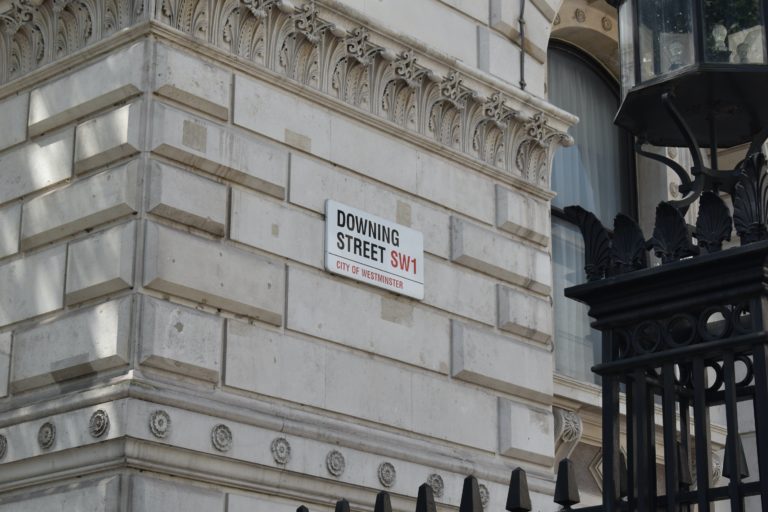As the race to Number 10 nears its climax, leadership hopefuls are deploying increasingly explosive rhetoric and bold pledges in a bid to secure votes. Yet despite calls for urgent and decisive action on a range of policy issues, the debate has been striking for its failure to hold either of the leadership hopefuls to account on their plans for the health and social care sector.
A damning report published by the House of Commons Health and Social Care Select Committee earlier this month concluded that the NHS and the social care sector are facing ‘the greatest workforce crisis in their history’. This week’s Levelling Up, Housing and Communities Select Committee report delivered an equally critical assessment of the current strategies to fund adult social care, concluding that ‘the Government currently has nothing more than a vision, with no roadmap, no timetable, no milestones, and no measures of success’.
One in three care workers left their job in 2020–21, with Care England reporting that as of December 2021, 95% of care providers were struggling to recruit staff. Likewise, hospital waiting lists rose to nearly 6.6 million in May, as recent research by the Nuffield Trust revealed that in England alone, the NHS could currently be short of 12,000 hospital doctors. Evidently, meaningful reforms are required to address the multiple issues plaguing the health and social system: the next Prime Minister must tackle these issues head on.
Sunak, the child of an NHS GP and pharmacist, has certainly talked the talk when it comes to NHS action. He has condemned ‘privatisation by the back door’ in response to the Private Healthcare Information Network’s findings of a 39% increase in private treatments since before the pandemic. Sunak’s pledge to tackle NHS backlogs with a dedicated ‘vaccines style’ task force committed to eliminating 12-month waiting times entirely by 2024. Meanwhile, he has also pledged to increase the target number of Community Diagnostics Hubs from 160 to 200 by March 2024. Although this sentiment has been widely welcomed, Sunak has not clarified how such pledges would be achieved. Certainly, given that the NHS is already failing to meet its current targets and clinicians are struggling under intense pressure, it is unclear whether target-based working presents an appropriate solution. It is clear however, that ambitious targets must be supported by adequate funding and workforce capacity to deliver the intended outcomes.
Sunak’s self-proclaimed ‘bold action’ to approach healthcare reform with a ‘war footing’ has not quite extended to addressing the social care crisis with the same level of vigour Many were critical of Sunak’s inaction regarding longstanding calls to introduce a costed workforce plan for the sector or increase care workers’ wages during his tenure in Number 11. He has also drawn criticism in the past for suggesting that NHS pay rises should be funded through existing budgets in the financially limited sector.
Of course, as Chancellor, he did introduce the first real commitment to sustainable funding for care in decades, via the 1.25% rise in National Insurance via the Health and Social Care Levy. Sunak described the levy as an ’expanded safety net’ to mitigate the ‘catastrophic care costs’ that individuals would otherwise be forced to cover. While this was broadly welcomed, with only £5.4bn of the estimated £12bn per annum raised from the levy going to social care rather than the NHS, the projected funding still falls short of the House of Commons Health and Social Care Select Committee’s estimations of a £7.8bn shortfall in the sector. Finally, responding to a question from the public regarding the issues facing social care during a visit to Cornwall, Sunak did not appear to commit to anything further than the Government’s planned reforms. Nor did he address how his potential Government intends to plug the funding gap that will remain outstanding.
By contrast, Truss’ primary health policy to date has entailed pledging to abolish Sunak’s Health and Social Care levy. Vowing to overturn the 1.25% tax burden that she dismissed as ‘morally wrong’ during one of the leadership contest debates, Truss has instead made a vague commitment to fund the struggling sector through ‘general taxation’. Her proposed plan to resort to national borrowing to fund this cut will offer limited and short-term relief alone, raising concerns that the intervention will not deliver the long-term systematic reform required by the sector.
Perhaps on the back of criticism of the existing levy, Truss has recently vowed to allocate a greater portion of healthcare spending to the social care sector. Explaining her intentions, Truss stated that ‘our councils are struggling and many people are trapped in beds in the [NHS] because there isn’t the social care available’. Whilst this prioritisation of social care will undoubtedly be seen as a victory by many, the question remains how she intends to finance such plans in the absence of a Social Care levy. Furthermore, Truss’ characterisation of social care as solely a means to relieve hospital pressures is likely to stoke further concerns that her strategy is only geared at short-term intervention.
Truss has also committed to ‘stripping away layers of management’ in the NHS, and recommitting to Johnson’s controversial ‘40 new hospitals’ pledge – which is under scrutiny from the National Audit Office for questions about its accuracy. Beyond this, however, Truss’ plans for the health and care sector are otherwise unclear. It looks like they will remain that way too, as she has declared that she will “stop short of announcing long-term NHS reform until she has got her feet under the desk”. Her short-lived pledge to cut the pay of public sector workers, including nurses, to save £8.8bn is hopefully not an indication of her approach to a health and care sector with a critical workforce recruitment and retention issue during a cost of living crisis.
Truss has also championed localised decision making, describing herself as a ‘great supporter of devolution’ in 2019. Although these comments were not made in the context of healthcare reform, this sentiment provides perhaps the best indication yet of Truss’ proposed management of health and care services. Such sentiment is certainly in keeping with the evolution of Integrated Care Systems, which were introduced in in April as part of the Government’s reforms. Truss and Sunak’s broad pledge to Local Councillors that they will receive more money for Adult Social Care services will be welcomed against the backdrop of historic cuts to services and increasing demand for care. Once again however, outstanding details are yet to give an indication of how much these promised resources get to grips with the scale of the problems facing local communities and care providers.
NHS leaders have called for both candidates to level with the public, and to offer ‘concrete proposals and realism’ to fully address the scale of the health and care crisis. At a time when three-quarters of care workers are paid less than the real living wage and patients face ‘catastrophic’ care costs, neither the status quo nor further cuts will resolve the health and social care crises. Instead, a sustainable strategy is required to reverse these entrenched issues. Thus far, the lack of commitment to practical measures to solve the workforce crisis and improve both the access to, and quality of, care services has not indicated significant movement in this direction. Although the new Prime Minister remains undecided for now, it is certain that the future leader must commit to radical action to improve health services and to deliver on Johnson’s pledge to ‘fix the crisis in social care once and for all’.




